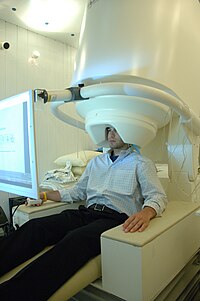
Photo from wikipedia
Abstract A wall-modeled statistically converged Large Eddy Simulation (LES) of the turbulent flow in the NASA Source Diagnostic Test turbofan has been successfully performed for the first time. A good… Click to show full abstract
Abstract A wall-modeled statistically converged Large Eddy Simulation (LES) of the turbulent flow in the NASA Source Diagnostic Test turbofan has been successfully performed for the first time. A good agreement with aerodynamic measurements is observed for both Reynolds Averaged Navier-Stokes and LES results, although the LES provides better results in the tip regions where large coherent structures appear and no flow separation on the stator vanes is observed. In the LES the boundary layer naturally transition to turbulence on the blade suction side but remains quasi laminar over most of its pressure side. The rotor-wake turbulence yielding the stage broadband noise is then seen to be quasi isotropic. Transition on the downstream stator vanes is not triggered by the wake impingement but rather occurs at mid-chord. Finally, acoustics are investigated using both Ffowcs Williams & Hawkings' and Goldstein's analogies from the recorded LES noise source on the stator vanes. The latter analogy provides levels closer to the measurements especially at high frequencies, although the results are most likely still influenced by too coherent rotor tip secondary flow at low frequencies.
Journal Title: Journal of Sound and Vibration
Year Published: 2019
Link to full text (if available)
Share on Social Media: Sign Up to like & get
recommendations!